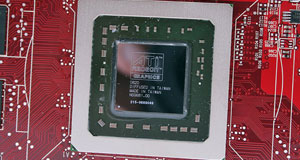
Posted on Saturday, September 06 2008 @ 5:15 CEST by Thomas De Maesschalck
Bit Tech just published their ATI RV770 architecture analysis that was unfortunately delayed at launch because of a family emergency:
One of the biggest improvements has to be anti-aliasing performance – it’s nothing short of incredible and it takes AMD (or ATI of old) back to where it used to be. The Radeons always used to make more efficient use of AA than Nvidia’s equivalent products and with the Radeon HD 4800 series, that has made a comeback in style.
Obviously there was a fairly low barrier for entry when it came to improving the situation, but AMD has gone well beyond improving it – the architects have gone from zero to hero almost as quickly as you can say just that. Improving the render backend throughput in certain scenarios was a clever way to improve anti-aliasing performance and I’m sure that GDDR5 has had an influence as well.
That’s not to say that the Radeon HD 4850 is starved of bandwidth though – its anti-aliasing performance is better than anything Nvidia has to offer at the moment. The Radeon HD 4870 and 4870 X2, on the other hand, are just in a completely different league. Playing games at high resolution with 8xAA enabled is verging on plausible on a card that costs quite a bit less than £200 (including VAT). And with the Radeon HD 4870 X2, it’s almost the default – at anything less than 1,920 x 1,200 4xAA, there’s simply no benefit to owning the card; it’s all about cranking the image quality right up in today’s games.
Read more
over here.
